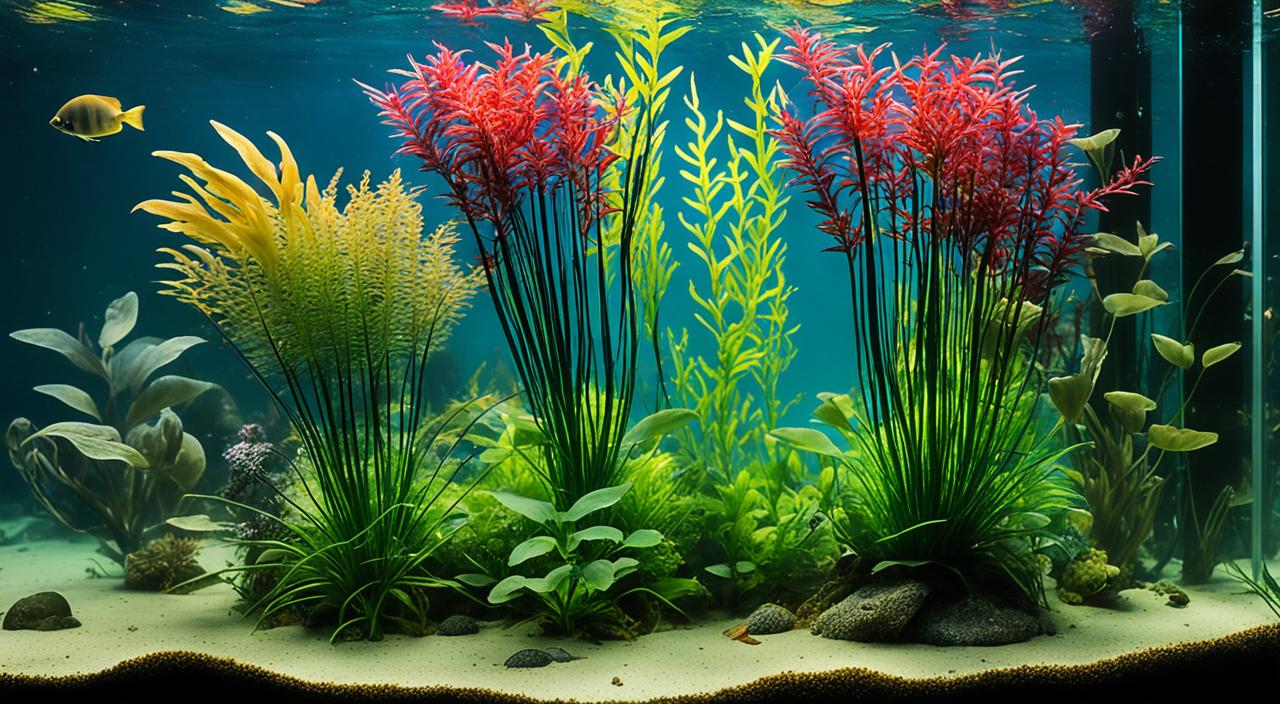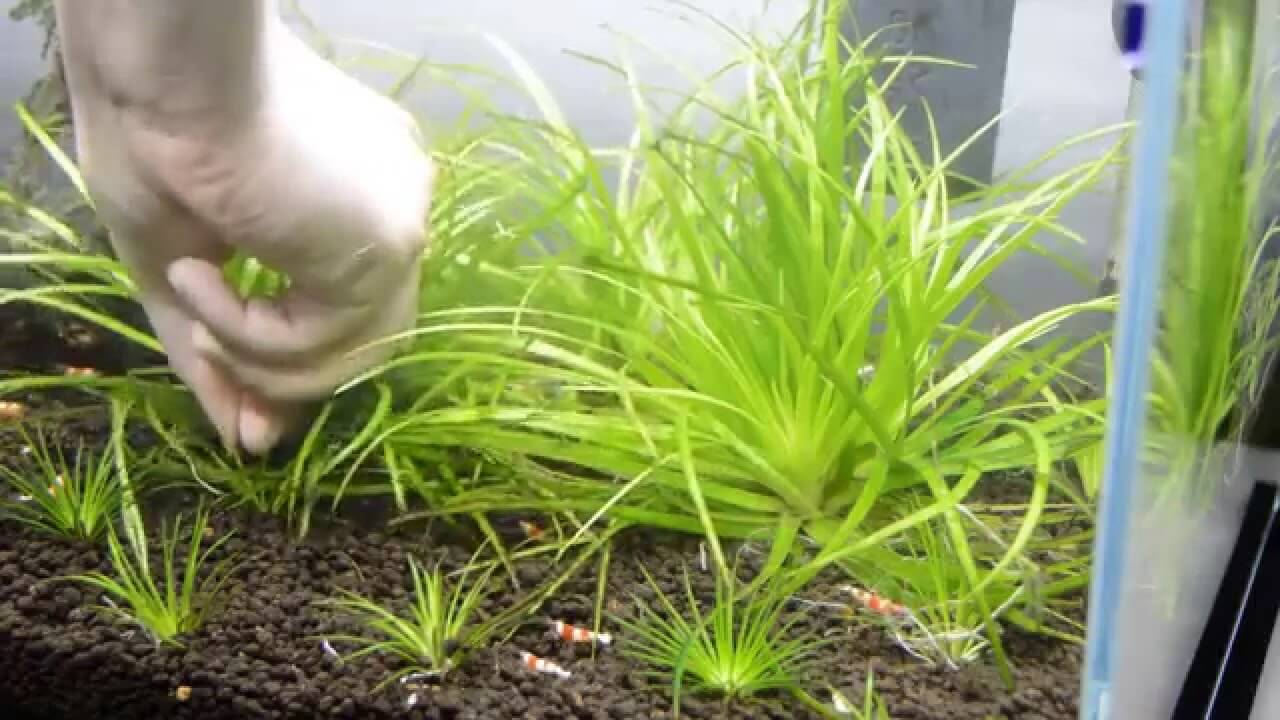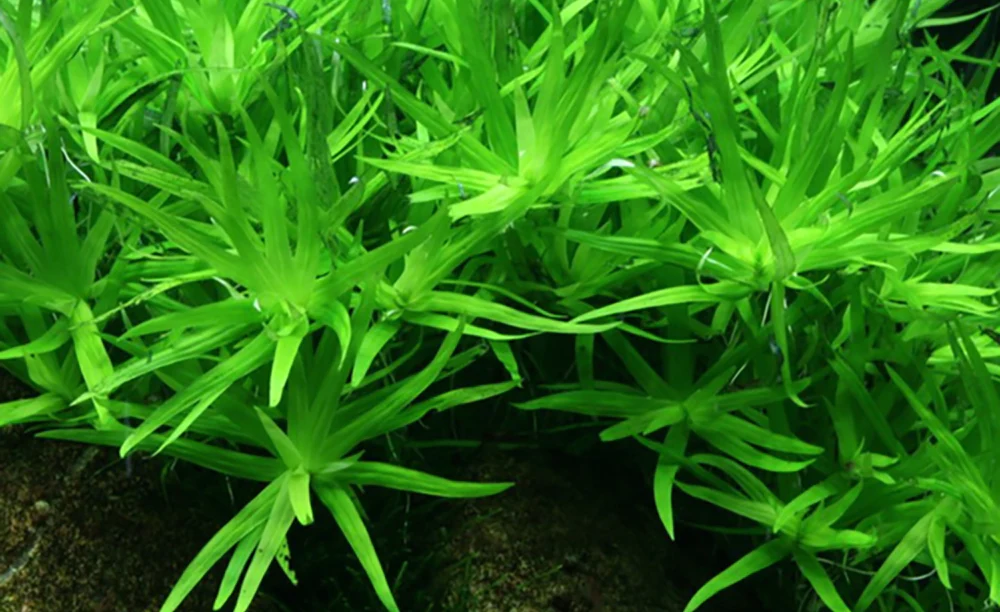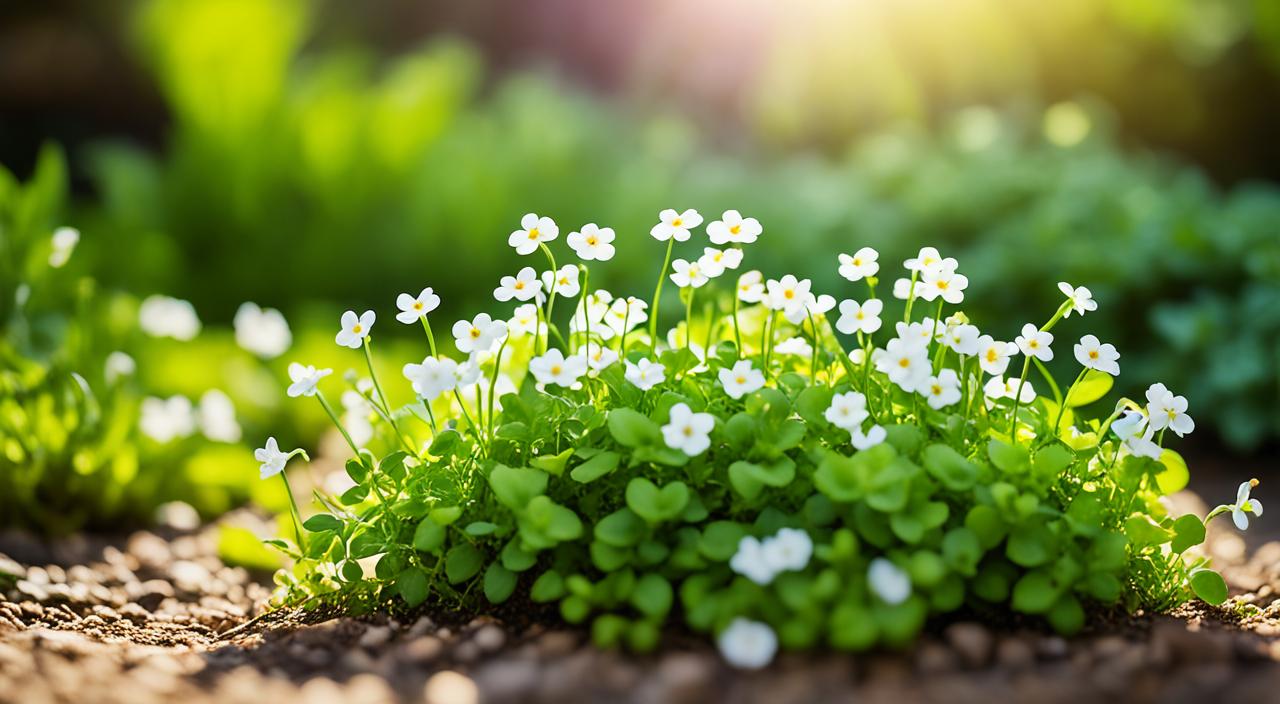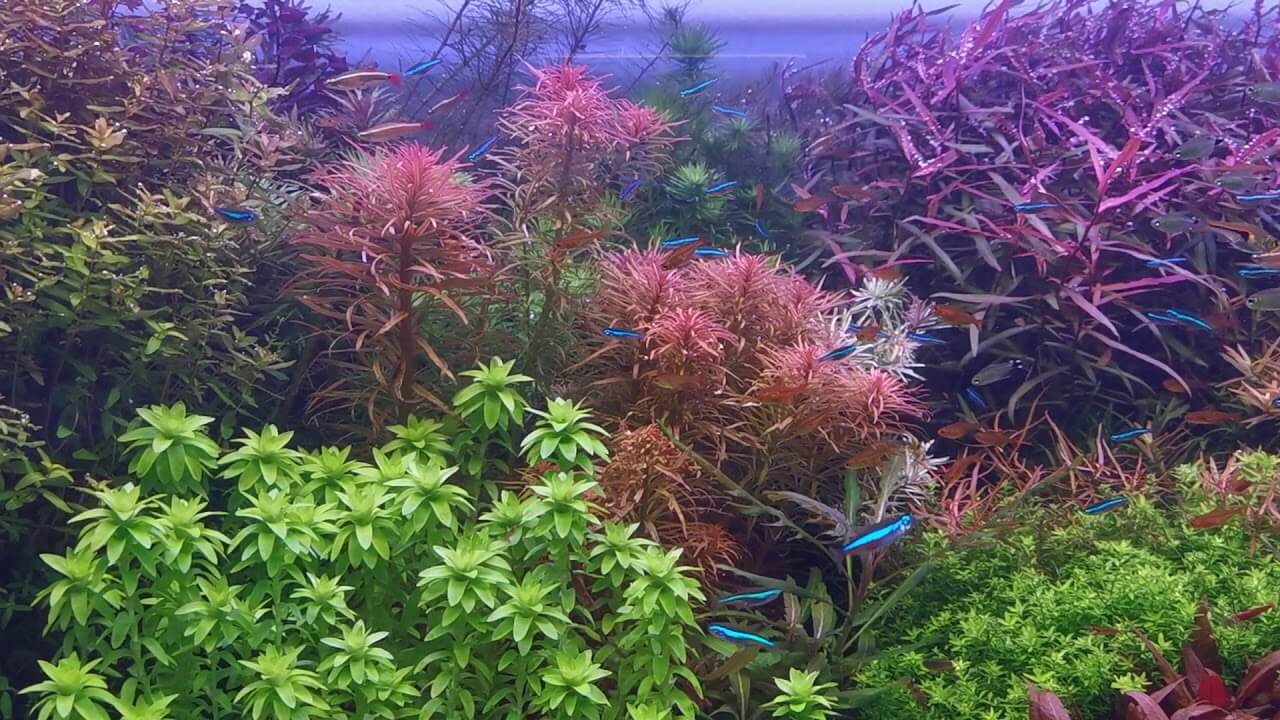Greetings! In this article, I will share valuable information about Hottonia palustris, a versatile aquatic plant highly favoured by advanced aquascapes. If you want to enhance your freshwater aquarium’s aesthetics, this plant is an excellent choice.
Also known as water violet or featherfoil, Hottonia palustris is a stunning European and Asian stem plant. Its curved shoots and light green leaves create a captivating visual display that beautifully complements other aquatic plants. Whether you have a low or tall tank, Hottonia palustris can thrive in various setups.
But how do you ensure the proper care and placement for Hottonia palustris? Let’s dive in and explore the best practices for growing and maintaining this aquatic gem.
Key Takeaways:
- Hottonia palustris is a versatile aquatic plant popular among advanced aquascapers.
- It originates from Europe and Asia and can thrive in various aquarium setups.
- Its curved shoots and light green leaves add visual appeal to freshwater aquariums.
- Proper care and placement are crucial for the successful growth of Hottonia palustris.
- Stay tuned for detailed insights on lighting, tank mates, feeding, care, and more!
Brief Overview Of Hottonia palustris
Hottonia palustris, or water violet or featherfoil, is a versatile aquatic plant that adds beauty and elegance to freshwater aquariums. Its feathered leaves and bushy growth habit make it a popular choice for midground aquascapes. This medium-growing plant can reach heights of 10-20+ centimetres, making it suitable for various tank sizes.
One of the advantages of Hottonia palustris is its low light demand. It can thrive with a lighting intensity of 0.5 watts per litre, making it ideal for beginner and advanced aquarists. However, while it can adapt to low levels of CO2, moderate CO2 supplementation is recommended for optimal growth and colouration.
Hottonia palustris Information Table:
| Row Names | Descriptions |
|---|---|
| 1. Scientific Name: | Hottonia palustris |
| 2. Common Names: | Water Violet, Featherfoil |
| 3. Origin: | Europe and Asia |
| 4. Height: | 20-50 cm (8-20 inches) |
| 5. Growth Rate: | Medium |
| 6. Colour: | Light green leaves with pinkish-to-white flowers |
| 7. Aquarium Placement: | Midground to Background |
| 8. Water Type: | Freshwater |
| 9. pH: | 6.0-7.5 |
| 10. Care Level: | Moderate to High |
| 11. Light Requirements: | High; 50-70 PAR (Photosynthetically Active Radiation), 5000-7000 Kelvin, 30-50 LUX |
| 12. CO2 Requirements: | Recommended for optimal growth |
| 13. Temperature: | 10-26°C (50-78°F) |
| 14. Flow Rate: | Low to Moderate |
| 15. Propagation: | Cuttings from the main stem |
| 16. Feed Type: | Liquid fertilizers and CO2 supplementation |
Expanded Light Requirements:
For Hottonia palustris, achieving lush growth and vibrant health requires specific lighting conditions. The plant thrives under high light intensity, with a PAR (Photosynthetically Active Radiation) value of 50-70. This light level ensures that the plant can photosynthesize efficiently, which is crucial for its growth and developing its characteristic vibrant colours.
The ideal Kelvin scale for Hottonia palustris ranges between 5000 and 7000 Kelvin. This spectrum simulates the bright, full-spectrum light in natural sunlight, promoting healthy growth and enhancing the plant’s natural colours. Lights within this Kelvin range balance warm and cool tones, providing an environment that closely mimics the plant’s natural habitat.
LUX, or the measure of light intensity as perceived by the human eye, should be 30-50 LUX for Hottonia palustris. While LUX is not a direct measure of the light energy available for photosynthesis, maintaining high LUX levels indicates a well-lit tank that can support the needs of high-light-requiring plants like Hottonia palustris.
Ensuring these lighting conditions will help Hottonia palustris thrive in an aquarium setting, displaying its full beauty and contributing to a healthy, balanced aquatic ecosystem.
Regarding water parameters, Hottonia palustris prefers a pH range of 5-7 and can tolerate temperatures from 4 to 28 degrees Celsius. This wide temperature tolerance allows it to thrive in various aquatic environments.
Overall, Hottonia palustris is a stunning aquatic plant that can enhance the visual appeal of any freshwater aquarium. Its vibrant green leaves and graceful growth pattern make it a captivating addition to high-light setups and aquascapes that prioritize aesthetics.
Origins And Habitat
Hottonia palustris, also known as water violet, is a fascinating aquatic plant native to Europe and Asia. It can be found in various natural habitats, such as marshes, bogs, and shallow ponds in these regions. This plant exhibits remarkable adaptations to thrive in its natural environment.
When fully submerged, Hottonia palustris develops deeply divided leaves immersed in water. However, these leaves can surface when there is a significant decrease in water levels. This characteristic allows the plant to survive in changing water conditions and increases its chances of obtaining plenty of sunlight for photosynthesis.
The roots of Hottonia palustris play a crucial role in anchoring the plant in its habitat. The basal roots are buried in the mud, providing stability, while the other roots, which are silvery and shiny, dangle freely in the water. These roots help in nutrient absorption and contribute to the overall health and growth of the plant.
The natural habitat of Hottonia palustris is typically characterized by high moisture content and nutrient-rich soil. These conditions support the growth of lush vegetation, making it an ideal habitat for various aquatic organisms. Furthermore, the dense populations of Hottonia palustris serve as essential habitats and protection for fish and fry, contributing to the overall biodiversity of the ecosystem.
| Origins: | Habitat: |
|---|---|
| Europe and Asia | Marshes, bogs, and shallow ponds |
| Aquatic plant origins | |
| hottonia palustris natural habitat |
Morphological Characteristics
Hottonia palustris is a stem plant with curved shoots that can grow 4-6 centimetres wide and 10-30 centimetres high. The leaves of Hottonia palustris are fan-shaped and intensely light green. They are deeply divided and resemble the teeth of a double comb. The plant’s leaves are alternate or connected to the stem in whorls. The flowers of Hottonia palustris are hermaphrodite and appear from May to June. The plant is self-fertile and is pollinated by insects and cleistogamy.
Placement And Lighting
Hottonia palustris, also known as water violet or featherfoil, is a visually striking aquatic plant that can add beauty to any aquarium. When it comes to placement, this plant thrives best in the midground or background of the tank. Its bushy growth habit makes it perfect for filling empty spaces between other plants and creating a lush, natural look.
One crucial aspect of caring for Hottonia palustris is providing adequate lighting. It requires a vigorous lighting intensity of at least 0.5 watts per litre as a high-light aquatic plant. Placing the plant in shaded areas can lead to the lower parts rotting away, so it’s essential to ensure sufficient light reaches all areas of the plant.
To illustrate the importance of lighting, take a look at the image below:
| Plant Placement | Lighting Requirements |
|---|---|
| Midground or background | Vigorous lighting intensity of at least 0.5 watts per litre |
In summary, Hottonia palustris thrives when placed in the midground or background of an aquarium with a vital lighting intensity of at least 0.5 watts per litre. By providing the proper placement and lighting, you can ensure this beautiful aquatic plant’s healthy growth and vibrant colouration.
What Are Good Tank Mates?
Good Tank Mates
When selecting tank mates for Hottonia palustris, several compatible options can coexist peacefully in the aquarium. These fish and invertebrates are small, peaceful species that will not disturb or eat the plant, creating a harmonious aquascape. Some ideal tank mates for Hottonia palustris include:
- Neon Tetras
- Cherry Shrimp
- Corydoras Catfish
- Small Rasboras
Fish Species To Avoid
While Hottonia palustris can coexist with many species, some fish may not be suitable tank mates. It is essential to avoid aggressive or larger fish that may uproot or damage the plant. Fish species known to nip or eat aquatic plants should also be avoided. Some fish species to avoid with Hottonia palustris include:
- Large Cichlids
- Goldfish
- Betta Fish (Siamese Fighting Fish)
- Barbs
By selecting compatible tank mates and avoiding aggressive or plant-damaging species, you can create a thriving and visually appealing aquarium with Hottonia palustris as the centrepiece.
Feeding (Fertilization)
Hottonia palustris can benefit from regular feeding and fertilization to support its growth and overall health. A balanced nutrient supply is crucial to ensure lush growth and vibrant colouration in this aquatic plant. When fertilizing Hottonia palustris, a liquid fertilizer formulated explicitly for aquatic plants is recommended. This type of fertilizer provides the necessary nutrients in a readily available form for the plant to absorb.
The dosage and frequency of fertilization should be tailored to the specific needs of the aquarium and the plant. It is essential to follow the instructions provided by the fertilizer manufacturer and adjust the dosage accordingly. Over-fertilizing can lead to nutrient imbalances and potentially harm the plant, while under-fertilizing may result in nutrient deficiencies and poor growth.
To determine the appropriate feeding schedule, it is essential to regularly monitor the nutrient levels in the aquarium and the overall health of the Hottonia palustris plants. Observing the appearance of the leaves, growth rate, and colouration can provide valuable insights into the plant’s nutrient requirements.
How Much And How Often To Feed
The amount and frequency of feeding Hottonia palustris will depend on the specific fertilizer being used and the plant’s individual needs. Generally, starting with a lower dosage and gradually increasing it if necessary is recommended. This allows for careful observation and adjustment to avoid over-fertilization.
As a general guideline, feeding Hottonia palustris once or twice a week with a small amount of liquid fertilizer can provide adequate nutrients. However, it is vital to consider the overall nutrient load in the aquarium, as other plants and livestock may also contribute to nutrient levels. Regular testing of the water parameters, including nitrate and phosphate levels, can help determine if additional fertilization is needed.
| Fertilizer Type | Recommended Dosage | Feeding Frequency |
|---|---|---|
| Liquid Aquatic Plant Fertilizer | Follow manufacturer’s instructions | Once or twice a week |
| Root Tabs | Insert tabs into the substrate near the roots | Every 3-6 months |
CO2 Injection
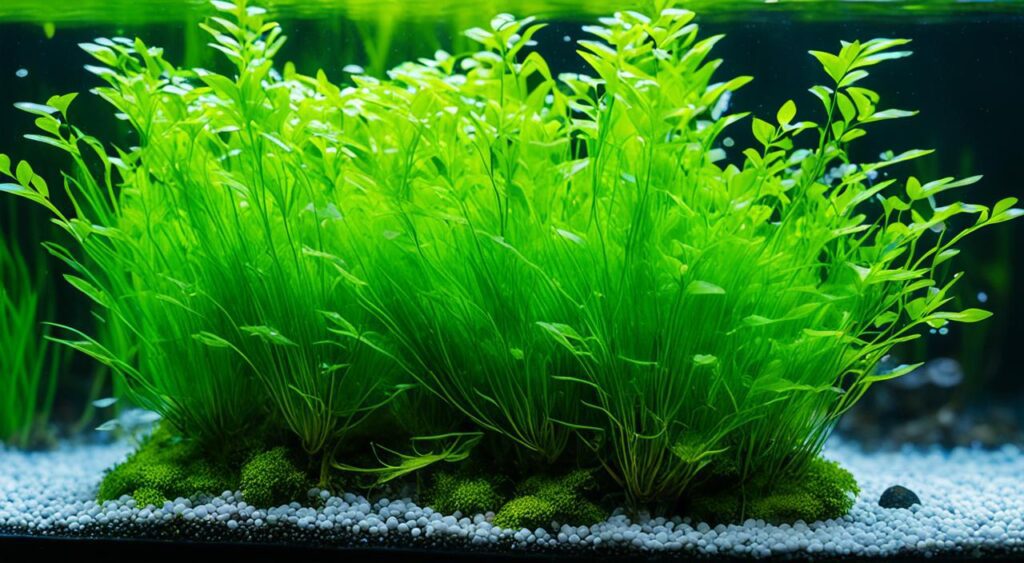
CO2 supplementation is an effective method to enhance the growth and coloration of Hottonia palustris in your aquarium. By adding CO2, you provide the necessary carbon source for the plant’s photosynthesis process, resulting in improved health and vitality.
There are different types of CO2 injection methods available to suit the specific needs and resources of your aquarium:
- Pressurized CO2 systems provide a precise and controlled release of CO2 into the aquarium water. They consist of a gas cylinder, regulator, and diffuser, ensuring efficient distribution of CO2 throughout the tank.
- DIY CO2 setups: This method involves creating your CO2 system using simple materials such as yeast, sugar, and a homemade reaction vessel. While cost-effective, DIY CO2 setups may require more frequent maintenance and monitoring.
- Liquid carbon supplements: Liquid carbon supplements are an alternative option for CO2 supplementation. These products contain liquid forms of carbon that are readily available for plant uptake. They can be added directly to the aquarium water, making them convenient.
Different aquarists have their preferences when it comes to CO2 injection methods. Factors such as tank size, plant density, and budget should be considered when choosing the most suitable CO2 supplementation option for your aquarium.
Care
Hottonia palustris, like any other aquatic plant, requires specific care to thrive in an aquarium environment. Attention to planted tank parameters, water quality, filtration, and flow is crucial for its overall health and growth.
Planted Tank Parameters
To create a suitable habitat for Hottonia palustris, optimising the planted tank parameters is crucial. Maintaining a pH range of 5-7, a temperature range of 4-28 degrees Celsius, and a carbonate hardness of 2-14 dKH is recommended. These parameters mimic the plant’s natural habitat and promote its healthy growth.
Water Quality
Regular monitoring and maintenance of water quality are essential for the well-being of Hottonia palustris. Conducting regular water changes and ensuring a proper filtration system is necessary for maintaining optimal water conditions. This helps prevent the accumulation of harmful substances and maintains the required nutrient levels for the plant’s growth.
Filtration
A sound filtration system is an integral part of caring for Hottonia palustris. It helps remove excess waste, uneaten food, and other pollutants from the water column. A properly functioning filtration system ensures a clean and healthy environment for the plant, reducing the risk of diseases and algae growth.
Flow
Adequate flow is essential for Hottonia palustris as it helps distribute nutrients and prevents stagnation. The gentle water flow promotes proper oxygenation and nutrient uptake by the plant. It is necessary to ensure that the flow is not too strong to avoid damaging the delicate leaves and stems of the plant.
By paying attention to these care aspects and providing the ideal planted tank parameters, water quality, filtration, and flow, you can create an optimal environment for Hottonia palustris to thrive and beautify your aquarium.
Aquarium Maintenance
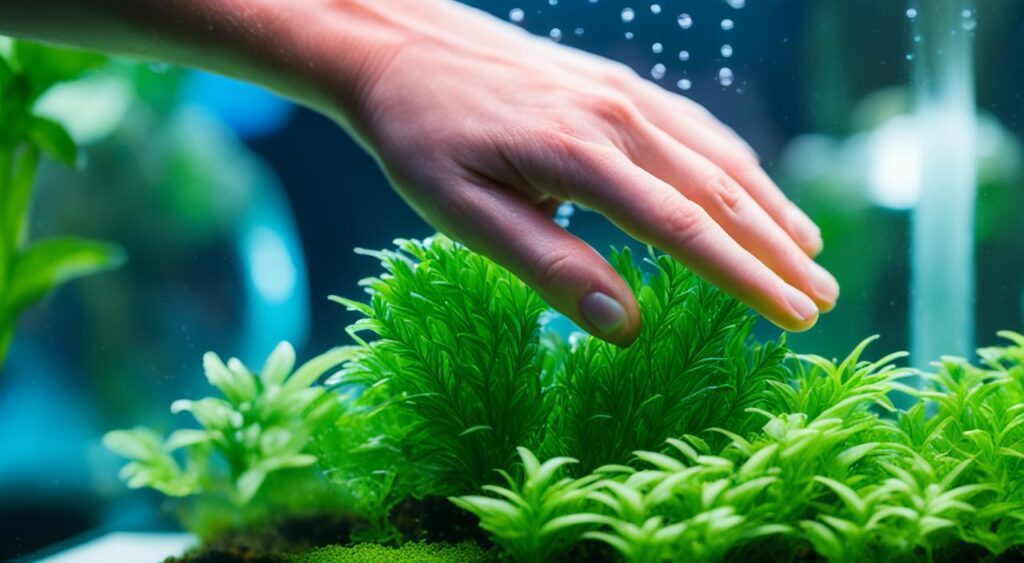
Testing Water Conditions
The health and vitality of Hottonia palustris in your aquarium depend on maintaining optimal water conditions. Regularly testing the water parameters is crucial to ensure the well-being of your plant. Test the pH, temperature, and nutrient levels to check if they are within the appropriate range for Hottonia palustris. Monitoring and adjusting these conditions as needed will help support your plant’s growth and overall health.
How To Set Up Your Aquarium Tank
To provide a suitable environment for Hottonia palustris, properly setting up your aquarium tank is essential. Start by selecting an appropriate substrate for the plant, such as nutrient-rich soil or gravel. Then, choose a lighting system to provide the necessary intensity for the plant’s photosynthesis process. Additionally, ensure a reliable filtration system to maintain water quality and circulation. A well-planned aquarium setup will create an optimal habitat for Hottonia palustris to thrive.
Propagation Methods
Propagating Hottonia palustris can be an exciting way to expand your plant collection. There are several methods you can use to propagate this plant. One standard method is by cutting off lateral shoots from the parent plant and replanting them in the substrate. Gently remove the lateral shoot, making sure it has some roots attached. Plant the shoot in the substrate and provide the proper care and conditions to encourage its growth. The propagated shoots will develop into new plants with time and proper care, helping you expand your Hottonia palustris population.
Regular maintenance and attention to water conditions, proper setup, and propagation methods are vital to maintaining a thriving Hottonia palustris aquarium. By testing water conditions, setting up the tank correctly, and propagating the plant effectively, you can ensure the health and longevity of your Hottonia palustris plants.
Health And Disease
Monitoring the health of Hottonia palustris is crucial to ensure its well-being in the aquarium. Signs of good health include vibrant colouration, lush growth, and the absence of wilting or yellowing leaves. On the other hand, signs of poor health can include stunted growth, yellowing or decaying leaves, and the presence of algae or other pests. Common health issues in Hottonia palustris can include nutrient deficiencies, root rot, and algae overgrowth. Treating these issues may involve adjusting nutrient levels, improving water circulation, or using targeted pest treatments.
Summary
Hottonia palustris, also known as water violet or featherfoil, is a versatile and attractive aquatic plant that can enhance the beauty of any freshwater aquarium. With the right care, placement, and lighting, this plant can thrive and create a stunning aquascape that will impress any observer.
To ensure the healthy growth of Hottonia palustris, it is essential to provide it with adequate nutrition and CO2 supplementation. A liquid fertilizer formulated explicitly for aquatic plants can help fulfil their nutrient needs. Adding CO2 can significantly enhance its growth and colouration, resulting in a more vibrant and visually appealing display.
Maintaining proper water parameters is crucial for the longevity and vitality of Hottonia palustris. This includes monitoring pH levels, temperature, and carbonate hardness to ensure they are within the optimal range for the plant. Regular water changes and a reliable filtration system can help maintain good water quality and prevent the build-up of harmful substances.
Lastly, regular monitoring and maintenance are essential to keep Hottonia palustris in optimal condition. This involves checking for signs of good health, such as vibrant colouration and lush growth, and addressing any signs of poor health, such as stunted growth or decaying leaves. By following these care tips, you can enjoy the beauty of Hottonia palustris in your aquarium for a long time.
FAQ
What care does Hottonia palustris require?
Hottonia palustris requires a pH range of 5-7, a temperature range of 4-28 degrees Celsius, and a carbonate hardness of 2-14 dKH. It also benefits from regular feeding, fertilization, and CO2 supplementation.
What are some good tank mates for Hottonia palustris?
Some ideal tank mates for Hottonia palustris include neon tetras, cherry shrimp, Corydoras catfish, and small rasboras.
How often should I feed and fertilize Hottonia palustris?
Feeding and fertilization should be based on the specific needs of your aquarium and plant. Use a liquid fertilizer formulated for aquatic plants and adjust the dosage and frequency accordingly.
What types of CO2 injection are suitable for Hottonia palustris?
There are different types of CO2 injection methods available, including pressurized CO2 systems, DIY CO2 setups, and liquid carbon supplements. Choose the method that best suits the needs and resources of your aquarium.
How should I set up my aquarium for Hottonia palustris?
Set up the aquarium with the appropriate substrate, lighting, and filtration system for Hottonia palustris. Monitor and maintain water conditions, perform regular water changes, and ensure adequate flow and nutrient distribution.
How do I propagate Hottonia palustris?
Hottonia palustris can be propagated by cutting off lateral shoots and replanting them in the substrate.
What are the signs of good health in Hottonia palustris?
Signs of good health in Hottonia palustris include vibrant coloration, lush growth, and the absence of wilting or yellowing leaves.
What are some common health issues in Hottonia palustris?
Common health issues in Hottonia palustris can include nutrient deficiencies, root rot, and algae overgrowth.
How do I treat health issues in Hottonia palustris?
Treating health issues in Hottonia palustris may involve adjusting nutrient levels, improving water circulation, or using targeted treatments for pests.
Can Hottonia palustris thrive in different aquarium setups?
Yes, Hottonia palustris can thrive in a variety of aquarium setups, including low and tall tanks, as long as the care requirements are met.
Is Hottonia palustris a suitable plant for advanced aquascaping?
Yes, Hottonia palustris is a versatile and attractive plant that is popular for advanced aquascaping due to its bushy growth habit and vibrant coloration.
Where is Hottonia palustris native to?
Hottonia palustris is native to Europe and Asia.
What is the ideal placement and lighting for Hottonia palustris?
Hottonia palustris is best placed in the midground or background of an aquarium with a high-light intensity of at least 0.5 watts per liter.

